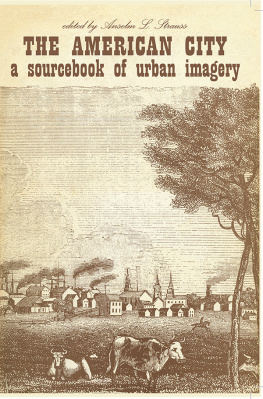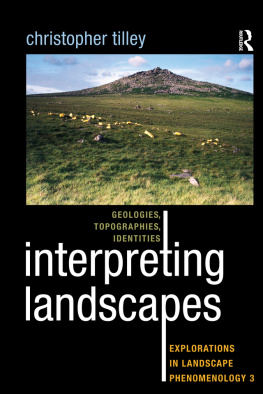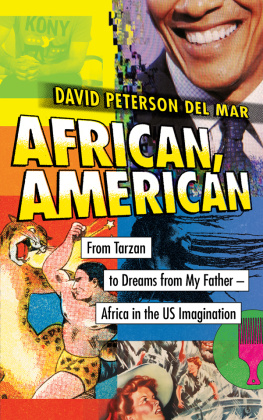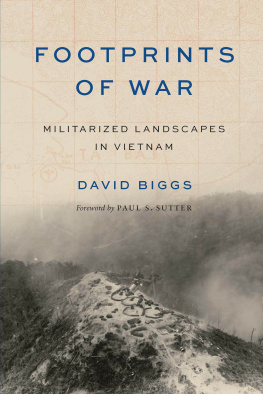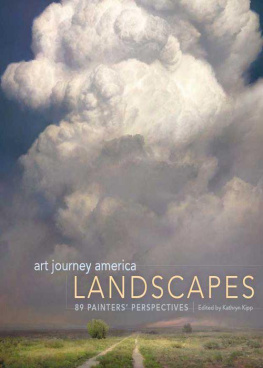David E. Nye - Conflicted American Landscapes
Here you can read online David E. Nye - Conflicted American Landscapes full text of the book (entire story) in english for free. Download pdf and epub, get meaning, cover and reviews about this ebook. year: 2021, publisher: MIT Press, genre: Romance novel. Description of the work, (preface) as well as reviews are available. Best literature library LitArk.com created for fans of good reading and offers a wide selection of genres:
Romance novel
Science fiction
Adventure
Detective
Science
History
Home and family
Prose
Art
Politics
Computer
Non-fiction
Religion
Business
Children
Humor
Choose a favorite category and find really read worthwhile books. Enjoy immersion in the world of imagination, feel the emotions of the characters or learn something new for yourself, make an fascinating discovery.

- Book:Conflicted American Landscapes
- Author:
- Publisher:MIT Press
- Genre:
- Year:2021
- Rating:4 / 5
- Favourites:Add to favourites
- Your mark:
- 80
- 1
- 2
- 3
- 4
- 5
Conflicted American Landscapes: summary, description and annotation
We offer to read an annotation, description, summary or preface (depends on what the author of the book "Conflicted American Landscapes" wrote himself). If you haven't found the necessary information about the book — write in the comments, we will try to find it.
Conflicted American Landscapes — read online for free the complete book (whole text) full work
Below is the text of the book, divided by pages. System saving the place of the last page read, allows you to conveniently read the book "Conflicted American Landscapes" online for free, without having to search again every time where you left off. Put a bookmark, and you can go to the page where you finished reading at any time.
Font size:
Interval:
Bookmark:

David E. Nye
The MIT Press
Cambridge, Massachusetts
London, England
2021 Massachusetts Institute of Technology
All rights reserved. No part of this book may be reproduced in any form by any electronic or mechanical means (including photocopying, recording, or information storage and retrieval) without permission in writing from the publisher.
This book was set in Bembo Book MT Pro by New Best-set Typesetters Ltd.
Library of Congress Cataloging-in-Publication Data
Names: Nye, David E., 1946- author.
Title: Conflicted American landscapes / David E. Nye.
Description: Cambridge, Massachusetts : The MIT Press, 2021. | Includes bibliographical references and index.
Identifiers: LCCN 2020021795 | ISBN 9780262542081 (paperback)
Subjects: LCSH: Landscape assessment. | Landscape protection. | Landscape assessmentSouthwest, New. | Environmental policySouthwest, New. | Nature conservationSouthwest, New. | National parks and reservesSouthwest, New.
Classification: LCC GF91.U6 N94 2021 | DDC 304.20979dc23
LC record available at https://lccn.loc.gov/2020021795
10 9 8 7 6 5 4 3 2 1
d_r0
Dedicated to my friends for more than half a century:
Elizabeth and Douglas Lewis
and
Janet and Lee Woolman
The impulse that led to this book came from a year at the now closed Center for Man and Nature at the University of Southern Denmark. Its many conferences and guest speakers realigned my research trajectory to focus more on environmental issues. Chapters 4 and 5 began as talks at that center. Other chapters were presented as lectures or papers, and for these opportunities I thank Nottingham University, Mainz University, the University of Oslo, the University of Amsterdam, the Society for the History of Technology, the European American Studies Association, and the Nordic Association of American Studies.
I have learned from other scholars for decades. Debts to individuals are so numerous I find it impossible to compile a comprehensive list. But this list begins with Leo Marx, whom I studied with half a century ago at Amherst College and have since cherished as a friend and colleague. I have benefitted greatly from conversations over the years with Klaus Benesch, Mick Gidley, Richard Hirsh, Ronald Martin, Miles Orvell, Dale Carter, Ronald Johnson, Jeffrey Meikle, Rob Kroes, Lawrence Buell, Lindy Biggs, David Lowenthal, Svend Erik Larsen, Marty Melosi, Cecelia Tichi, Merritt Roe Smith, Robert Emmett, Anne Mrk, Barbara Allen, Steven Hartman, Mark Luccarelli, Thomas Zeller, the late Hal Rothman, and the late Stuart Kidd. I have also learned from lectures or papers given by William Cronon, Jacob Wamberg, Christopher Bailey, Stephen Mosley, Pia Maria Ahlback, Peter Goin, and Elizabeth Raymond.
Libraries were essential to this project, notably the University of Minnesotas Wilson Library; the British Library, London; the Brotherton Library, Leeds University; Cambridge University Library; Boston Public Library; New York Public Library; Minneapolis Public Library; Grand Canyon Visitor Center Library; the University of Southern Denmarks library; the libraries of the Massachusetts Institute of Technology; and the archives held at The Henry Ford in Dearborn.
Readers familiar with my American Technological Sublime (1994) or America as Second Creation (2003) will see that this book explores topics that are adjacent to those works. This has required a little repetition to introduce new readers to concepts such as the geometrical sublime and second creation narratives. Half of the chapters appeared as articles in Germany, Britain, or the United States, as listed below. These have been extensively revised, including additional primary sources.
- Chapter 3: Narrating the Contested Space of Detroits River Rouge. Zeitschrift fr Anglistik und Amerikanistik 64, no. 1 (November 2015): 2742.
- Chapter 5: Remaking a Natural Menace: Engineering the Colorado River. In Technologies of Landscape: from Reaping to Recycling, edited by David E. Nye, 97116. Amherst: University of Massachusetts Press, 1999.
- Chapter 6: Visualizing Eternity: Photographic Constructions of the Grand Canyon. In Picturing Place: Photography and the Geographical Imagination, edited by Joan M. Schwartz and James R. Ryan, 7495. London: I. B. Taurus, 2003.
- Chapter 7: The Sublime and the Skyline. In The American Skyscraper: Cultural Histories, edited by Roberta Moudry, 255270. Cambridge: Cambridge University Press, 2005.
- Chapter 9: De-Realizing the Grand Canyon. In Emotion in Postmodernism, edited by Gerhard Hoffmann and Alfred Hornung, 7594. Heidelberg: Universittsverlag C. Winter, 1997.
The lands of the United States are riven with conflicts over science, religion, identity, and politics. Some of these disputes seem beyond compromise. Millions of creationists contend that the biblical flood described in the Book of Genesis carved American landscapes fewer than ten thousand years ago, a view completely at odds with the science of geology. Millions of environmentalists are furious with fracking by gas and oil companies. In western states, millions contend that the government controls too much land and throttles free enterprise. There are arguments over dams and water rights, Native American demands for protection of sacred places, lawsuits about where to put nuclear waste, protests against mines and pipelines, demonstrations both for and against new national monuments, conflicts between utilities and the Environmental Protection Agency, and scientific warnings about global warming, pesticide use, and species extinction. Americans invented the idea of national parks. They sing of pastoral landscapesamber waves of grain and the fruited plainand of sublime purple mountain majesties. They identify their nation with nature but disagree about when and how nature emerged, about how to use natural resources, and about which lands are sacrosanct.
A book about this crisis requires an interdisciplinary definition of landscape that combines aesthetics, geography, and cultural history, one that recognizes that every landscape is inseparable from the technologies of agriculture, energy, transportation, and construction. The cultural geographer J. B. Jackson usefully defined landscape as a composition of man-made or man-modified spaces to serve as infrastructure or background for our collective existence. This definition places human beings inside the frame rather than looking at a scene from outside. It situates mankind in an evolving ecology along with plants, insects, birds, fish, and animals, and it correctly presents landscape as being always already a man-modified place. A landscape is conflicted when several groups want different modified spaces in the same location. Some want to develop and profit from sites that others want to preserve. An agricultural community like the Amish may come into conflict with expanding suburbia. Mining corporations battle environmentalists who want an ore-rich area to be a bird sanctuary. The Bureau of Reclamation may plan to flood part of a national monument. In some cases, a conflicted landscape may be degraded until it loses symbolic value or even until it can no longer support many life forms. It can become a fatal environment, an anti-landscape.
Many of the conflicted landscapes examined in this book are in the Southwest. Yet this is not a history or cultural geography of that region. These competed with one another to some degree, but Americans became adept at alternating between these concepts depending upon where they found themselves. When looking at a city or factory, the utilitarian view seemed appropriate. In rural America, the pastoral ideology took precedence. And were the same person to travel to a remote mountain, the primitive aesthetic became dominant. By the middle of the nineteenth century, Americans had not one but three contradictory conceptions of nature. The primitive aesthetic celebrated the natural sublime and wilderness areas. The pastoral aesthetic lauded the fusion of nature and culture, notably in gardens, city parks, family farms, ornamental landscapes, and state and national parks. The pastoral was the middle landscape between raw wilderness and the heavily populated, built-up zones. In the utilitarian view, land was real estate that ought to be fully developed, and the most impressive improvements were appreciated in terms of the technological sublime. Each aesthetic still has institutional affiliations. The Sierra Club, Friends of the Earth, and other environmental groups focus on protecting wilderness. The National Park Service (NPS), local communities, and conservationists promote and protect pastoral landscapes. Others champion utilitarian development, including real estate developers, mining interests, chambers of commerce, the Bureau of Reclamation, and the Army Corps of Engineers. These three conceptions of nature long defined a discourse, in which most Americans slipped back and forth between contradictory ways of thinking, depending on location and circumstance.
Next pageFont size:
Interval:
Bookmark:
Similar books «Conflicted American Landscapes»
Look at similar books to Conflicted American Landscapes. We have selected literature similar in name and meaning in the hope of providing readers with more options to find new, interesting, not yet read works.
Discussion, reviews of the book Conflicted American Landscapes and just readers' own opinions. Leave your comments, write what you think about the work, its meaning or the main characters. Specify what exactly you liked and what you didn't like, and why you think so.

